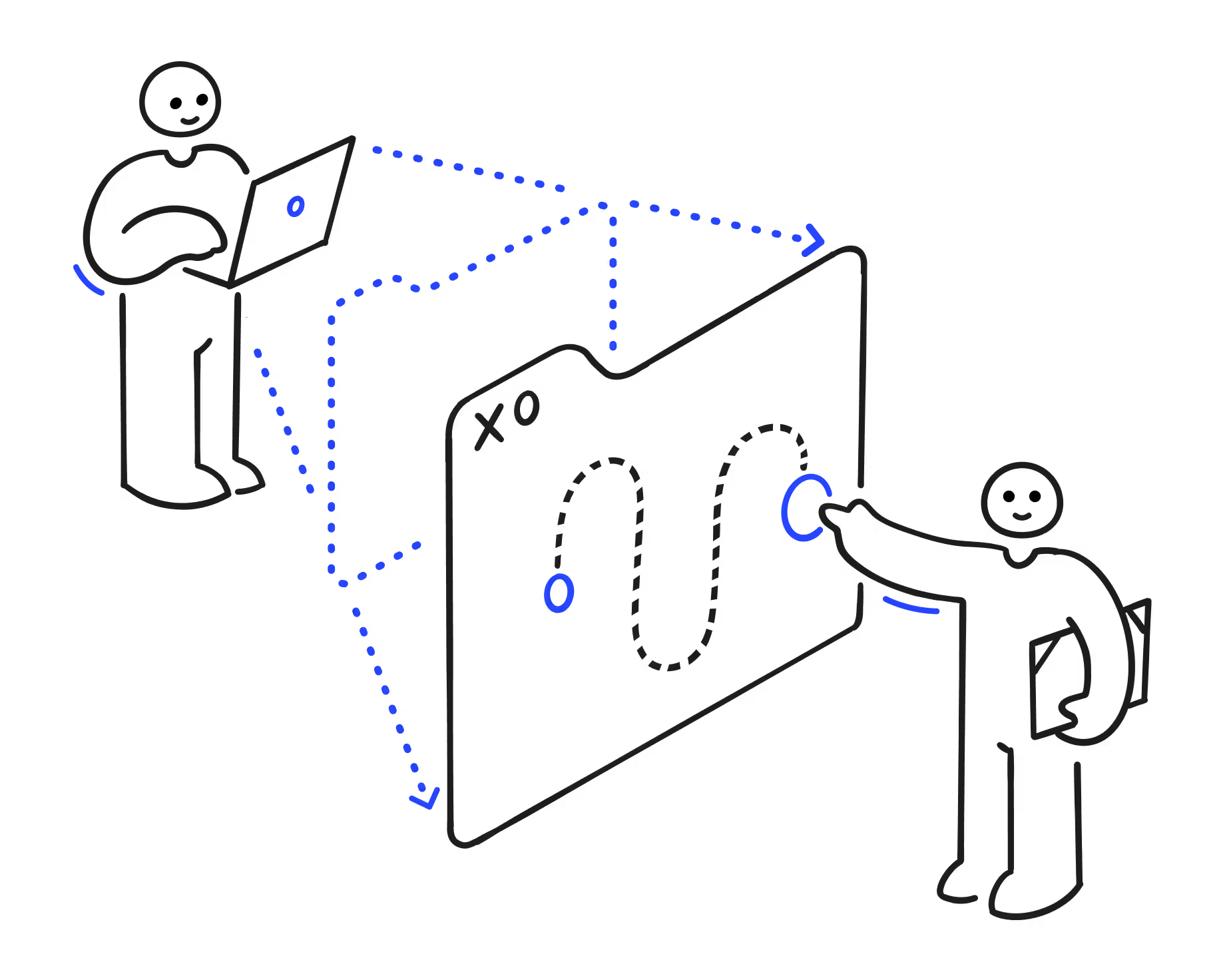How to empower employees: A 9-step guide

Recognize employees properly
Learn everything you need to know about employee recognition and how to implement it in your team by downloading the complete guide below.
%20(1).png)
Empowered employees are more engaged and effective. But empowerment doesn’t come from adding buzzwords to a policy or a manager saying, “You’re empowered,” and walking away. It comes from giving employees the authority to make decisions and the support to grow.
While the path to empowering employees at work isn’t always obvious, this nine-step roadmap will help HR and managers make it real.
What’s empowerment in the workplace?
Employee empowerment is a management approach that puts more decision-making power in frontline workers’ hands. Instead of micromanaging, leaders give their people the tools and trust to take ownership of their work.
Creating a culture of empowerment takes both vision and execution. HR teams build structures that support autonomy, and managers bring them to life by giving team members room to lead.
Empowerment looks different for everyone. For one employee, it might come in the form of remote work or flexible hours. For another, it could mean having the authority to make real-time customer decisions without waiting for manager approval. The key is staying attuned to the information uncovered through regular check-ins, performance conversations, and tools like pulse surveys.
The benefits of employee empowerment
Empowerment benefits everyone, from individual team members to their managers to the business as a whole. Here’s how.
More energized, invested teams
Employees are more engaged and report higher job satisfaction when managers trust them to take ownership of their work. When that trust is missing, motivation drops. And so does the drive to go the extra mile.
With real autonomy, employees feel more connected to their impact. Instead of just completing tasks, they look for ways to innovate and support their team’s success.
Greater trust in leadership
Empowerment shifts managers from taskmasters to mentors. That means supporting team decisions, celebrating wins, and encouraging personal and professional growth.
Trust deepens when leaders prioritize coaching over control. That trust gives employees the confidence to take smart risks and grow in their roles.
Creativity that moves the business forward
Micromanagement stifles ideas. When employees feel scrutinized, they’re less likely to share new ways of thinking.
Empowerment flips that dynamic. Employees who feel safe to question the status quo are more likely to propose smarter workflows and flag risks early. That kind of initiative fuels ongoing innovation, keeping the business on a path toward growth.
A stronger bottom line
Employees closest to the work are usually the ones who know how to improve it. Giving employees the power to make decisions in their roles builds confidence and directly improves both individual and company performance.
Empowered teams innovate faster, build stronger customer connections, and contribute to sustained profitability. They respond in real time, solving issues and surfacing opportunities that drive measurable value for the business.
Empowerment management: 9 actionable ways to enable team success
Here are nine actionable ways that HR and managers can prioritize partnership over hierarchy to empower their teams.
1. Communicate a clear vision
Empowering employees doesn’t mean the manager steps back entirely. Leaders still need to set a clear vision and establish guardrails that align with company goals. These boundaries give employees clarity on where they can take initiative without becoming misaligned.
It’s HR’s job to turn executive direction into concrete policies and systems. Managers then bring those systems to life, tailoring them to their team’s daily work.
Here’s how communicating the vision might look in practice:
- Executives launch an initiative to resolve customer issues faster.
- HR translates the initiative into a decision-making policy.
- The customer support manager then adapts it, clarifying which decisions need manager input versus decisions team members can make on their own.
2. Foster an environment of trust
Managers build trust by giving team members greater control over their work (within HR guidelines). When employees understand exactly where their autonomy begins and ends, they can make decisions and suggest improvements with confidence.
Psychological safety is equally important. When challenges come up, employees should feel comfortable admitting mistakes or raising concerns without fear of disciplinary action.
3. Help employees take ownership
Every employee should feel empowered in their role. But the level of autonomy managers delegate often depends on individual readiness and competence.
That’s why you should think of employee empowerment as a hands-on approach. Managers need to continuously assess where each person stands, providing coaching as employees grow into greater responsibility.
4. Offer resources
Team members can’t take ownership without the right tools. Managers should encourage employees to be vocal about what they need to succeed.
This is where HR, L&D, and team leaders join forces. Whether it’s securing access to tools or training, the goal is the same: removing barriers to make sure employees have what they need to do their best work.
5. Provide professional development
Empowerment thrives when competence grows. Employees are more likely to take ownership when they see how professional development opportunities connect to their current responsibilities and future goals.
Organizations should build structured pathways for growth, tailoring those pathways to both individual aspirations and business needs. That could mean offering formal mentorship and training programs that build foundational knowledge and confidence. It might also include cross-functional projects and stretch assignments that challenge employees to expand beyond their current capabilities.
6. Be open-minded to flexible work arrangements
Empowerment isn’t limited to decision-making. It also includes how employees structure their workday: where, when, and how they get things done.
Managers should stay open to adaptive models like remote work, flexible hours, compressed weeks, or job sharing. These options help employees balance personal and professional responsibilities, which is a great way to keep them happy. But more importantly, flexibility signals trust.
Engagement data backs this up: Fully remote employees are the most engaged, followed by hybrid workers and on-site employees who have some flexibility. At the bottom of the scale? On-site employees with no remote options — a clear signal that rigid structures are motivation killers.
7. Lead by example
Empowerment culture starts at the top. Leaders set the tone, and their behavior shapes what’s expected and accepted throughout the organization.
Managers who model accountability, transparency, and trust in their team’s expertise build a culture of ownership from the ground up. When employees see these behaviors modeled consistently, they feel safe and are expected to step up.
That’s why leadership training is so important. When managers fully understand their leadership mandate and performance standards, they’re better equipped to create an environment where empowered employees thrive.
8. Adopt continuous feedback
Accountability and employee empowerment go hand in hand. Trusting workers with more authority requires managers to offer clear, consistent feedback to make sure they meet expectations.
HR and managers can reinforce this dynamic by using tools that make feedback timely and actionable. Workleap Performance is a great example — it captures real-time 360-degree feedback and distills it into targeted, AI-powered insights that drive continuous growth.
With a shared, data-backed view of what’s working and what needs adjusting, employees can take meaningful action and track their own performance. Managers, in turn, can coach with greater clarity and confidence, offering timely support that’s targeted and rooted in real outcomes.
9. Be generous with rewards
Recognition systems are more than morale boosters. They’re proven drivers of engagement, retention, and performance. When employees feel seen and valued for their contributions, they’re more satisfied in their roles and more likely to stay and grow with the organization.
Rewards (financial and otherwise) play an important role in employee motivation. While some leadership narratives downplay the importance of money, compensation remains a top motivator for employees. Just as valuable, though, are non-monetary forms of recognition: public and private acknowledgment, expanded decision-making authority, and flexible benefits that reflect increased responsibility.
Appreciation doesn’t always need to be formal, either. A spontaneous “thank you” or shoutout for a job well done goes a long way. When leaders offer consistent, genuine praise, employees are more likely to take even greater ownership of their work.
Empowering the people who power performance
When employees have the tools, trust, and autonomy to lead their work, performance naturally follows. They solve problems faster, own their outcomes, and bring new energy to the team.
Workleap Performance makes employee empowerment seamless and sustainable. Its AI-driven 360-degree reviews help employees identify their strengths and growth areas more easily and more often. Armed with clear, data-backed insights, employees gain the clarity and confidence to thrive in their roles and shape their growth.
Start your free trial today to see how Workleap can help you turn empowerment into performance.
FAQs
What’s the future of empowerment in the workplace?
As organizations continue to prioritize agility and resilience, tech-enabled empowerment will shape the next era of high-performing, people-first workplaces.
Today’s tools make it easier for teams to share responsibility, give feedback, and align around goals, all without adding complexity. HR teams and managers are turning to solutions like Workleap Performance to:
- Deliver constructive, AI-powered feedback
- Automate performance reviews
- Align goals at the individual and team levels
- Track progress through a single unified dashboard
How can organizations help managers empower their direct reports?
HR sets the vision and guardrails for distributed decision-making. With that clarity, managers can confidently grant autonomy while tying every decision to organizational goals.
Companies can also empower managers through leadership coaching and development. When managers understand what great leadership looks like in their specific context, they’ll be better equipped to support and empower their teams.
What’s the difference between employee empowerment and employee engagement?
Employee empowerment comes from giving employees the authority, tools, and autonomy to own their work. Employee engagement reflects how emotionally invested employees are in their roles and in the organization.
Empowerment fuels engagement. When managers trust employees to make decisions, workers are more likely to feel motivated and connected to the company’s success.
Discover Workleap Officevibe's benchmark report on 12 key employee engagement metrics


%20(1).avif)


.avif)
.avif)
%20(1).avif)







